Pinocchio
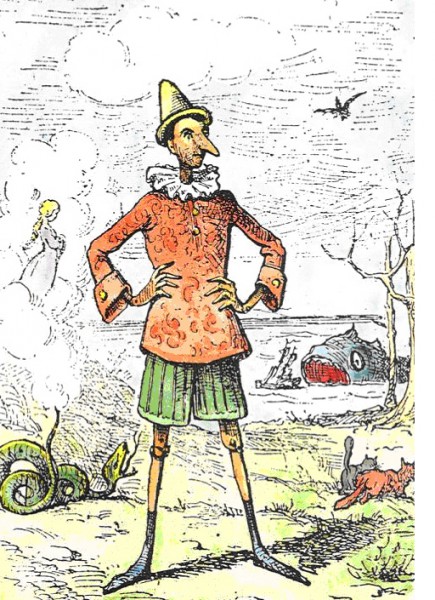
Si vous aimez ce personnage, faites-le savoir !
Pinocchio est un personnage de fiction, héros du roman pour enfants Les Aventures de Pinocchio (Le avventure di Pinocchio), écrit en 1881 par le journaliste et écrivain italien Carlo Collodi. Biographie
Aspects of Pinocchio's character vary depending on the interpretation, although basic aspects such as his creation as a puppet by Geppetto and the size of his nose changing due to his lies or stress remain present across the various formats.Pinocchio is known for having a short nose that becomes longer when he is under stress (chapter 3), especially while lying. His clothes are made of flowered paper, his shoes are made of wood and his hat is made of bread (page 16 of Collodi's Le Avventure di Pinocchio). In this, the original tale, Collodi describes him as a “rascal,” “imp,” “scapegrace,” “disgrace,” “ragamuffin,” and “confirmed rogue,” with even his father, carpenter Geppetto, referring to him as a “wretched boy.” Upon being born, Pinocchio immediately laughs derisively in his creator’s face, whereupon he steals the old man’s wig.
Pinocchio’s bad behavior, rather than being charming or endearing, is meant to serve as a warning. Collodi originally intended the story, which was first published in 1881, to be a tragedy. It concluded with the puppet’s execution. Pinocchio’s enemies, the Fox and the Cat, bind his arms, pass a noose around his throat, and hang him from the branch of an oak tree.
…a tempestuous northerly wind began to blow and roar angrily, and it beat the poor puppet from side to side, making him swing violently, like the clatter of a bell ringing for a wedding. And the swinging gave him atrocious spasms….
His breath failed him and he could say no more. He shut his eyes, opened his mouth, stretched his legs, gave a long shudder, and hung stiff and insensible.
Clothing and character
Pinocchio is a marionette (a wooden puppet that is maneuvered with wires) and not a puppet (controlled from inside by the puppeteer's hand). But the piece of wood from which he is derived is animated, and so Pinocchio moves independently. Basically good, he often gets carried away by bad company and is prone to lying. Because of these characteristics he often finds himself in trouble, from which, however, he always manages to get out. In the course of the novel there are some transformation: after promising The Fairy with Turquoise Hair to stop being a puppet and he wants to become a real boy, flees with Candlewick in Land of Toys, and ends up becoming, after five months of plenty, in a donkey, finishing in a company of clowns. In the last chapter Pinocchio, out of the mouth of The Terrible Dogfish with Geppetto, finally stops being a puppet and becomes a real boy (thanks to the intervention of the Fairy in a dream).
In the novel, Pinocchio is often depicted with a pointy hat, a jacket and a pair of colored, knee-length pants. In the Disney version, the appearance is very different, and the character is dressed in Tyrolean style, with Lederhosen and a hat with a feather.
The nose
The best-known of Pinocchio's characteristics is his nose, which grows in length when he tells a lie: this appears in chapter XVI. It should be noted how Collodi himself, in Note gaie claims how "to hide the truth of a speculum animae (mirror of the soul) face [ ... ] is added to the true nose another papier-mache nose". There is an inconsistency, however, because his nose grows when it is first carved by Gepetto, without Pinocchio ever lying.
The nose only appears a couple times in the story, but it reveals the Blue Fairy's power over Pinocchio when he acts disobediently. After struggling and weeping over his deformed nose, the Blue Fairy summons woodpeckers to peck it back to normal.
Ses meilleurs films
Joué par les acteurs
Filmographie de Pinocchio (14 films)

Pinocchio (2012)
, 1h15Réalisé par Enzo D'Alò
Origine Italie
Genres Fantasy, Animation
Thèmes L'enfance, Jeu, Magie, Adaptations de Pinocchio, Jouet, Films pour enfants
Acteurs Robert Naylor, Paolo Ruffini, Rocco Papaleo, Maurizio Micheli, Pino Quartullo, Massimo Corvo
Note60%





Gepetto, un menuisier italien pauvre et sans enfant, fabrique, à l'aide d'une bûche de bois, un pantin qu'il nomme Pinocchio et qu'il aime comme son propre fils. Mais le pantin s'anime et se révèle doté d'un caractère rebelle, égoïste et menteur. Pinocchio ne tarde pas à fausser compagnie à son créateur pour découvrir le monde, où il vit de nombreuses aventures et mésaventures. Il rencontre le marionnettiste Mangefeu, le Chat et la Renarde qui s'avèrent deux arnaqueurs, puis part au Pays des jouets qui lui réserve des désillusions. Il reçoit heureusement la protection de la Fée aux cheveux bleus.

Shrek 4 : Il était une fin (2010)
, 1h33Réalisé par Mike Mitchell
Origine Etats-Unis
Genres Science-fiction, Fantastique, Comédie, Fantasy, Action, Aventure, Animation
Thèmes Mise en scène d'un animal, Magie, Voyage dans le temps, Mise en scène d'un chat, Mise en scène d'un dragon, Films pour enfants, Mise en scène d'un mammifère
Acteurs Mike Myers, Eddie Murphy, Cameron Diaz, Antonio Banderas, Walt Dohrn, Jon Hamm
Note63%





Le film commence par l'habituel récit de l'histoire de Fiona. C'est alors que l'on découvre le principal antagoniste de cet épisode : Tracassin, gnome spécialisé dans les transactions magiques, avait pour ambition de régner en maître sur le royaume de Fort Fort Lointain. Le roi Harold et la reine Liliane, désespérés de ne pas pouvoir retrouver leur fille, avaient pris la décision de « court-circuiter » la Marraine-Fée et d'avoir recours à la magie de Tracassin. Après un instant d'hésitation et, poussé par sa femme et Tracassin, Harold s'apprête à signer le contrat, lorsqu'un héraut annonce que la princesse Fiona a été libérée, rendant inutile au royal couple le recours aux pouvoirs du nain. Cela rendit le nain Tracassin très furieux, si bien qu'il passa de nombreuses années à fomenter sa vengeance sur Shrek.

Shrek, fais-moi peur ! (2010)
, 30minutesRéalisé par Gary Trousdale, Raman Hui
Origine Etats-Unis
Genres Comédie, Horreur, Animation
Thèmes Magie, Films pour enfants
Acteurs Mike Myers, Cameron Diaz, Gabriel Basso III, Dean Edwards, Antonio Banderas, Cody Cameron
Note66%





Halloween est le jour favori de Shrek ! Il se délecte déjà à l'idée de passer une nuit effrayante…à sa façon ! Au lieu d'user des farces habituelles ou d'offrir les traditionnels bonbons, Shrek fait monter les enchères et met au défi l'Âne, le Chat Potté et tous ses autres amis de passer la nuit dans le château hanté de Lord Farquaad à se raconter des histoires effrayantes, chacun à son tour…Quelle sera l'histoire la plus terrifiante ? La compétition ne fait que commencer…
 , 1h15
, 1h15Réalisé par Steven E. Gordon
Origine Etats-Unis
Genres Comédie, Fantasy, Aventure, Animation
Thèmes Politique, Films pour enfants, Royauté
Acteurs Cam Clarke, Wallace Shawn, Kirk Thornton, Mickey Rooney, Cindy Robinson, Tom Kenny
Note37%





Jeune femme moderne, Blanche Neige préfère s’amuser avec ses amies La Petite Bergère, Boucles d’or et Le Petit Chaperon Rouge plutôt que d’aider les habitants du royaume. Son père, le roi Cole, dépassé par la situation, décide de se remarier et charge la Bonne Fée de lui trouver sa future femme. Mais la maladresse de Mambo et Munk qui doivent veiller sur la balance du bien et du mal aura bien des conséquences ! Dame Futile est présentée au roi qui décide de l’épouser sans savoir que cette dernière n’a qu’une idée en tête : diriger le royaume. Pour cela et avec l’aide de Rumpelstiltskin, elle réussit à écarter Blanche Neige qui est forcée de s’enfuir dans la forêt. Avec Mambo et Munk en ville et étant la seule à pouvoir empêcher le mariage du roi et de Dame Futile, Blanche Neige doit prouver qu’elle peut être à la hauteur de son titre et à la tête du royaume.

Pinocchio, un cœur de bois (2008)
, 3h20Origine Royaume-uni
Genres Drame, Comédie musicale, Fantasy, Aventure
Thèmes L'enfance, Jeu, Magie, Adaptations de Pinocchio, Jouet, Films pour enfants
Acteurs Robbie Kay, Bob Hoskins, Joss Ackland, Alessandro Gassmann, Violante Placido, Thomas Brodie-Sangster
Note55%





C’est dans un village de Toscane que l’histoire d'un écrivain se réalise par magie : en effet, le pantin de bois, réalisé par le vieux menuisier Geppetto, devient vivant par l'entremise de la fée. Afin de gagner un véritable cœur, Pinocchio devra agir pour le bien. Geppetto découvre la naïveté de l'enfant dès les premières sorties.
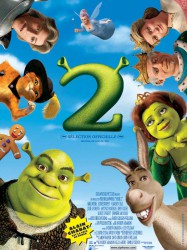
Shrek 2 (2004)
, 1h33Réalisé par Kelly Asbury, Conrad Vernon, Andrew Adamson
Origine Etats-Unis
Genres Drame, Science-fiction, Comédie, Fantasy, Action, Aventure, Animation, Romance
Thèmes Mise en scène d'un animal, Magie, Mise en scène d'un chat, Mise en scène d'un dragon, Films pour enfants, Mise en scène d'un mammifère
Acteurs Mike Myers, Eddie Murphy, Cameron Diaz, Antonio Banderas, Julie Andrews, John Cleese
Note73%





Shrek est un ogre, récemment marié à Fiona, une princesse qui est née de parents humains, mais dont l'apparence est celle d'une ogresse à cause d'un maléfice. Ils sont tous les deux invités à recevoir la bénédiction des parents de Fiona, le roi Harold et la reine Lilian du royaume de Fort Fort Lointain, à laquelle l’Âne s'invite.
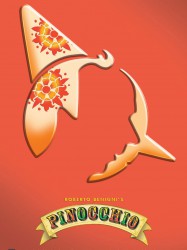
Pinocchio (2002)
, 1h46Réalisé par Roberto Benigni
Origine France
Genres Science-fiction, Comédie, Comédie dramatique, Fantasy
Thèmes L'enfance, Jeu, Magie, Les fées, Adaptations de Pinocchio, Jouet, Films pour enfants
Acteurs Roberto Benigni, Nicoletta Braschi, Kim Rossi Stuart, Carlo Giuffrè, Breckin Meyer, David Suchet
Note44%





Adaptation cinématographique de la célèbre histoire de Pinocchio de Carlo Collodi.

Mickey, la magie de Noël (2001)
, 1h5Réalisé par Burny Mattinson, Roberts Gannaway
Origine Etats-Unis
Genres Comédie, Animation
Thèmes Mise en scène d'un animal, Noël, Mise en scène d'un oiseau, Mise en scène d'un rongeur, Mise en scène d'une souris, Films pour enfants, Mise en scène d'un mammifère
Acteurs Wayne Allwine, Tony Anselmo, Carlos Alazraqui, Bill Farmer, Jeff Bennett, Russi Taylor
Note67%





Mickey, la magie de Noël (Mickey's Magical Christmas: Snowed In at the House of Mouse) est une compilation de courts-métrages avec Mickey Mouse, sortie directement en DVD le 6 novembre 2001 aux États-Unis et le 4 décembre 2002 en France. Elle comprend : – Donald fait du patin (Donald On Ice, 1999) ; – L'Arbre de Noël de Pluto (Pluto's Christmas Tree, 1952) ; – Casse-Noisette (The Nutcracker, 1999) ; – ainsi que le moyen-métrage Le Noël de Mickey (Mickey's Christmas Carol, 1983), entrecoupés de séquences inédites inspirées de la série TV Disney's tous en boîte (House of Mouse, 2001-03).
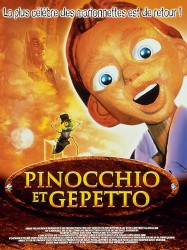
Pinocchio et Gepetto (1999)
, 1h34Réalisé par Michael Anderson
Origine Etats-Unis
Thèmes L'enfance, Jeu, Magie, Adaptations de Pinocchio, Jouet
Acteurs Martin Landau, Udo Kier, Gabriel Thomson, Sarah Alexander, Warwick Davis, Simon Schatzberger
Note50%





Voulant aider son père malade, Pinocchio se laisse embobiner par la maléfique M Flambeau qui lui vend un étrange élixir censé guérir Geppetto. Cette potion de charlatan se révèle en fait un mauvais sort, qui transforme Geppetto en pantin de bois. Pinocchio, voulant retrouver son père comme avant, supplie M Flambeau de lui rendre sa forme humaine. Mais il se laisse une nouvelle fois avoir et redevient lui aussi un pantin de bois. Il s'avère en réalité que M Flambeau est en fait Lorenzini, l'ennemi de Pinocchio lors du précédent film.

Pinocchio (1996)
, 1h36Réalisé par Steve Barron
Origine Etats-Unis
Genres Drame, Science-fiction, Fantasy, Aventure, Musical, Animation
Thèmes L'enfance, Jeu, Magie, La prison, Adaptations de Pinocchio, Jouet, Films pour enfants
Acteurs Jonathan Taylor Thomas, Martin Landau, Geneviève Bujold, Udo Kier, Bebe Neuwirth, Rob Schneider
Note52%





Geppetto est un sculpteur sur bois. Un jour, il découvre une bûche qui ne brûle pas dans sa cheminée, et décide de créer une nouvelle marionnette, qu'il appellera Pinocchio. La marionnette est mystérieusement animée par magie, et s'enfuit. Geppetto le retrouve rapidement, et lui apprend comment bien se comporter. Pinocchio est plus tard approché par deux voleurs, Volpe et Felinet, qui essaye de le mener en bateau afin de commettre un vol, mais il est dissuadé par Geppetto. Les deux voleurs se rendent chez Lorenzini, un riche marionnettiste, qui est informé de la marionnette. Lorenzini se rend chez Geppetto, afin de lui proposer de vendre Pinocchio, mais Geppetto refuse.

La Revanche de Pinocchio (1996)
, 1h34Réalisé par Kevin Tenney
Origine Etats-Unis
Genres Drame, Thriller, Fantastique, Horreur, Slasher
Thèmes Mise en scène d'un animal, Le thème de l'éducation, L'enfance, Jeu, Magie, Maladie, La prison, Psychologie, Mise en scène d'un insecte, Adaptations de Pinocchio, Tueur en série, L'enfance marginalisée, Jouet, Folie, La peine de mort, Films pour enfants
Acteurs Rosalind Allen, Verne Troyer, Aaron Lustig, Ron Canada, Larry Cedar, Matisse
Note41%





Déclaré coupable d'un meurtre d'enfant, Vincent Gotto (Lewis van Bergen) est condamné à mort. Il laisse à son avocate, Jennifer Clark (Rosalyn Allen), un ultime présent : une poupée de bois nommée Pinocchio (Dick Beals & Verne Troyer). Jennifer en fera cadeau à sa fille Zoe (Brittany Alyse Smith), pour son huitième anniversaire. Zoé et Pinocchio deviennent inséparables. Une série d'événements aussi bizarres qu'effrayants surviennent...
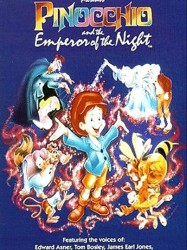 , 1h27
, 1h27Réalisé par Hal Sutherland
Origine Etats-Unis
Genres Fantasy, Aventure, Animation
Thèmes L'enfance, Jeu, Magie, Adaptations de Pinocchio, Jouet, Films pour enfants
Acteurs Scott Grimes, Tom Bosley, Edward Asnere, Frank Welker, Jonathan Harris, James Earl Jones
Note61%





Pinocchio qui est désormais un enfant, accompagné d'un insecte qu'il a fabriqué nommé Willy et d'une marionnette blonde nommée Twinie, affronte deux voleurs, Scalawag et Igor ainsi que le mystérieux marionnettiste Pupettino, maître d'une fête foraine. Ce dernier grâce à ses pouvoirs magiques a transformé Pinocchio en poupée de bois. Il faudra toute l'ingéniosité et le courage de Willy pour aider son maître à retrouver sa forme originelle en faisant appel à la bonne fée...
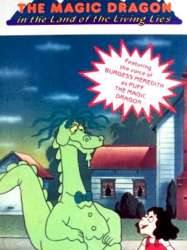 , 30minutes
, 30minutesRéalisé par Fred Wolf
Origine Etats-Unis
Genres Fantasy, Animation
Thèmes Mise en scène d'un animal, Mise en scène d'un dragon
Acteurs Burgess Meredith, Ike Eisenmann, Joan Gerber, Robert Ridgely
Note74%





The film begins with Puff acting out the lies of a girl named Sandy, who has developed a persistent habit of making up absurd lies on most occasions, and shows how this has alienated most of her friends and leaving only her dog as a companion. Puff moves to intervene when she causes a household accident and falsely blames her innocent dog who is sent away as punishment.

Pinocchio (1940)
, 1h28Réalisé par Norman Ferguson, Thornton Hee, Wilfred Jackson, Ben Sharpsteen, Hamilton Luske, Jack Kinney, Bill Roberts
Origine Etats-Unis
Genres Fantasy, Musical, Animation
Thèmes Mise en scène d'un animal, L'enfance, Jeu, Magie, La mer, Transport, Cétacé, Mise en scène d'un chat, Mise en scène d'un insecte, Les fées, Adaptations de Pinocchio, Musique, Jouet, Buddy movie, Films pour enfants, Mise en scène d'un cétacé, Mise en scène d'un mammifère
Acteurs Cliff Edwards, Dickie Jones, Christian Rub, Mel Blanc, Walter Catlett, Charles Judels
Note74%





Dans un petit village, un vieux sculpteur sur bois nommé Geppetto vit seul avec son chat Figaro et Cléo, un poisson rouge. Fabricant de jouets, il crée une marionnette qu'il baptise Pinocchio. Son souhait le plus cher, n'ayant pas d'enfant, est que cette marionnette devienne un vrai petit garçon. Durant la nuit, son vœu est réalisé par une bonne fée nommée la Fée bleue, qui donne vie à la marionnette. Celle-ci propose à Pinocchio un marché : il ne deviendra un vrai petit garçon qu'à la condition qu'il se montre digne de l'être. Jiminy Cricket, un grillon ayant trouvé refuge chez Geppetto pour y passer la nuit, se voit attribuer la tâche d'être la bonne conscience du pantin pour l'empêcher de mal agir. En récompense, il demande à être gratifié d'une médaille. Mais la tâche de Jiminy s'avère compliquée.
 Connexion
Connexion




